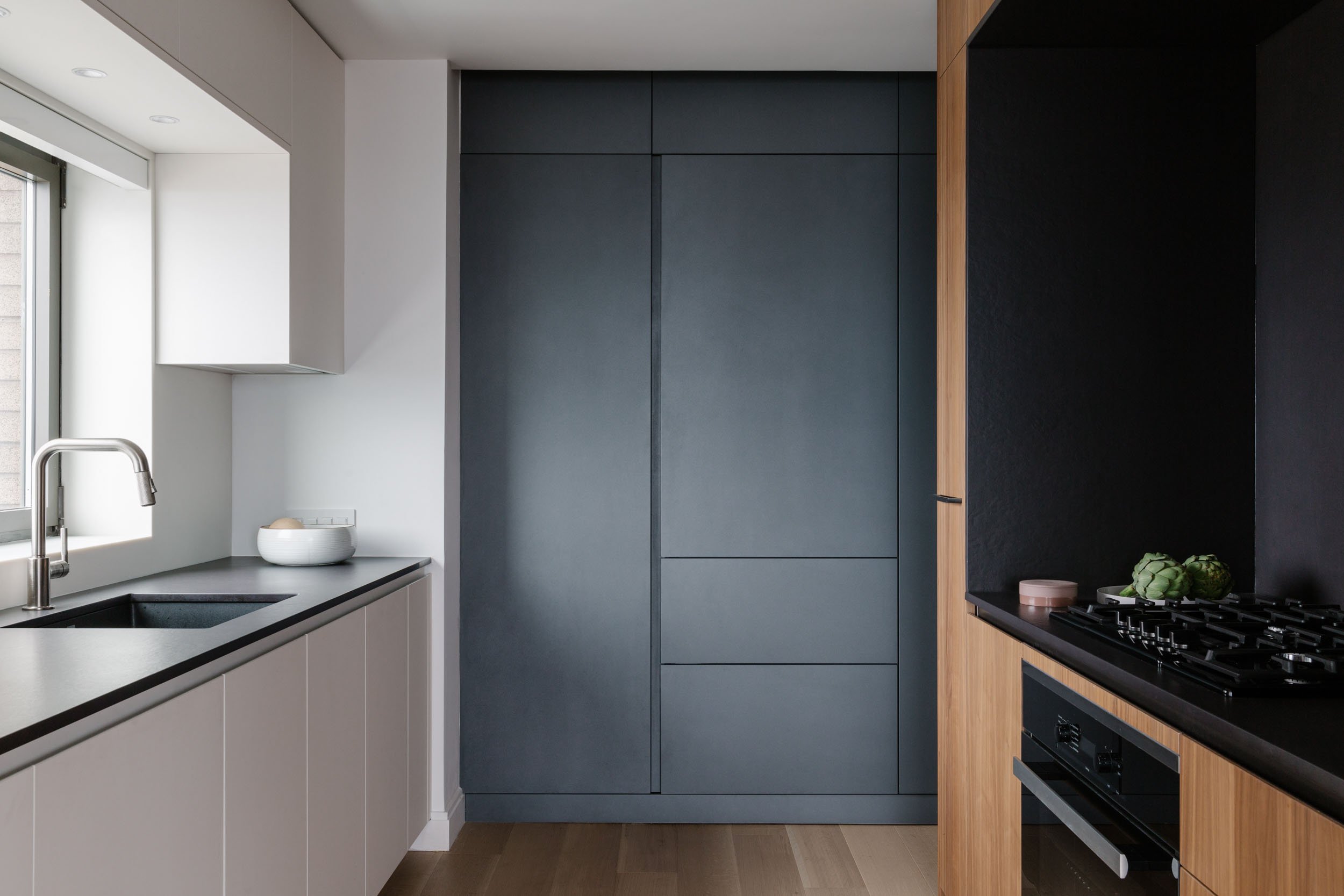The Luxury Tariff Loophole
Project: 425 East 58th Street
A Windfall for European Cabinetry Importers While US Mills Face a Supply Chain Squeeze
The Presidential Proclamation of September 29, 2025, adjusting imports of wood products, was intended to strengthen US industrial resilience and curb the erosion of the domestic wood industry, which faces threats of mill closures and diminishing capacity. However, the details of this trade action have created a counterintuitive advantage for importers of high-end European kitchen cabinetry, placing domestic US kitchen cabinetry manufacturers—and their workers—at a significant competitive disadvantage due to rising input costs.
The European Tariff Advantage: A 15% Shield
The most critical feature of the new tariffs is the massive disparity in duty rates based on the country of origin:
The General Tariff Wall: Imports of finished kitchen cabinets and vanities (including parts imported for their use) were initially subjected to a 25 percent ad valorem duty rate effective October 14, 2025. This rate is scheduled to soar to 50 percent effective January 1, 2026. This high rate fundamentally alters the economics for most foreign suppliers.
The EU/Japan Luxury Cap (The Benefit): The proclamation explicitly states that, pursuant to framework agreements negotiated with the European Union (EU) and Japan, the resulting tariff rate for their originating wood products shall not exceed 15 percent (when added to the applicable Column 1 Duty Rate).
For importers selling European luxury cabinetry brands, such as CESAR, this 15% cap acts as a powerful shield. While most international competitors face a potential 50% duty, EU manufacturers are guaranteed a maximum duty of 15%.
This massive tariff differential—a 35-point competitive gap—allows importers of high-end Italian or German cabinetry (Gregory Hitchcock Design, which sells CESAR cabinetry) to maintain relative price stability and competitiveness in the luxury sector, effectively clearing out non-EU imports that cannot bear the 50% tax. This competitive stability for the preferred EU imports acts as a direct benefit to their U.S. importers.
The Domestic Supply Chain Squeeze: Costs for US Mill Workers
While the new policy protects EU importers by limiting their duty exposure, it simultaneously increases the operational costs for US kitchen cabinetry manufacturers, undermining the intended goal of bolstering domestic capacity and employment. This increased cost burden is detrimental to US mill workers specializing in cabinetry.
The rising costs are inflicted through two main supply chain channels: raw wood materials and essential hardware components.
1. Rising Cost of Raw Materials
Domestic manufacturers who rely on imported inputs for their production are immediately penalized. The proclamation imposes a 10 percent ad valorem duty rate on imports of softwood timber and lumber. Since wood products serve as essential inputs across multiple sectors, supporting industrial resilience, raising the cost of this input by 10% strains domestic mills, which are already dealing with the persistent threat of closures and supply chain disruptions noted by the Secretary of Commerce.
2. The Hidden Cost of Cabinetry Hardware and Parts
Crucially, the tariffs apply broadly, covering not just finished cabinets but also "parts imported for use in kitchen cabinets and vanities". These parts are subject to the same high general duty rates: 25% initially, rising to 50% effective January 1, 2026.
Cabinetry hardware (hinges, drawer slides, organizational systems, etc.) is frequently sourced internationally. These hardware parts are critical components that make up the final product.
If U.S. cabinet manufacturers rely on imported hardware and parts for their products, they must now absorb or pass on duties that could be as high as 50 percent on these essential, non-wood components. This simultaneous imposition of:
A 10% tariff on imported softwood lumber.
A potential 50% tariff on imported hardware and parts.
Versus a maximum 15% duty on finished luxury cabinets from the EU.
... creates a dramatic supply chain squeeze for U.S. manufacturers. By increasing the costs of both raw wood and necessary finished components, the tariffs effectively punish the US domestic industry's supply chain, potentially raising operational costs and hindering the ability of US mills to compete across the market segments the tariffs were meant to protect.

